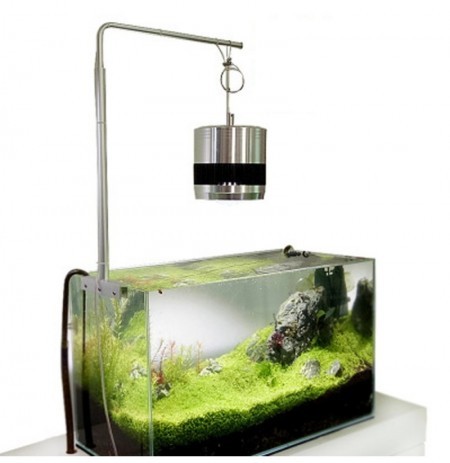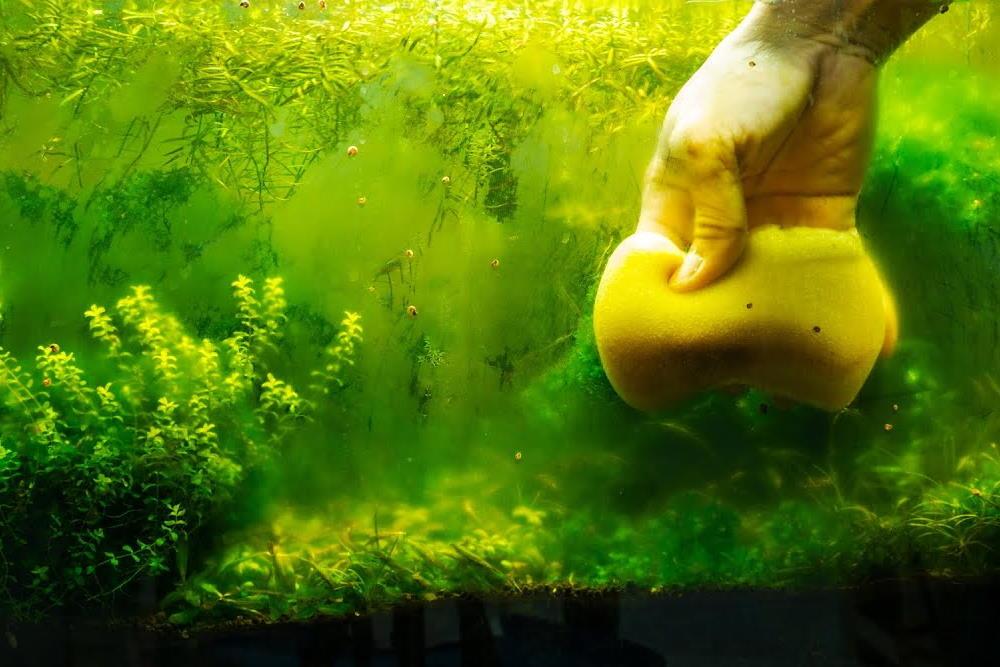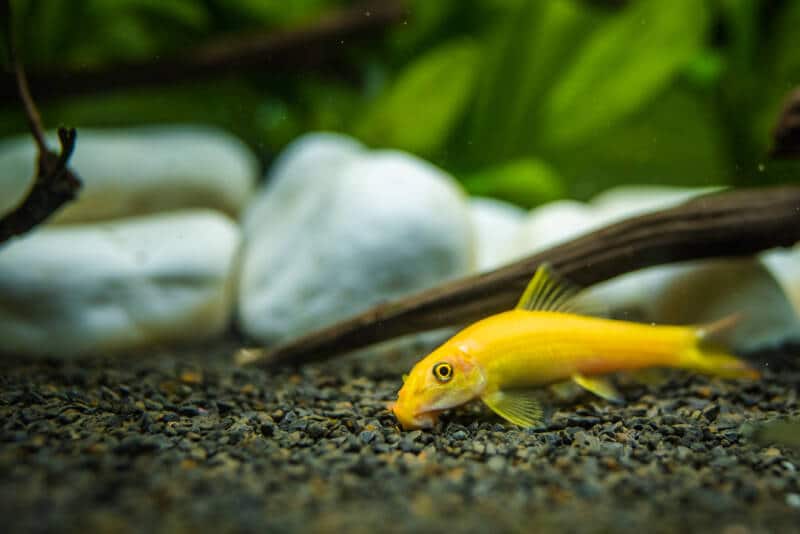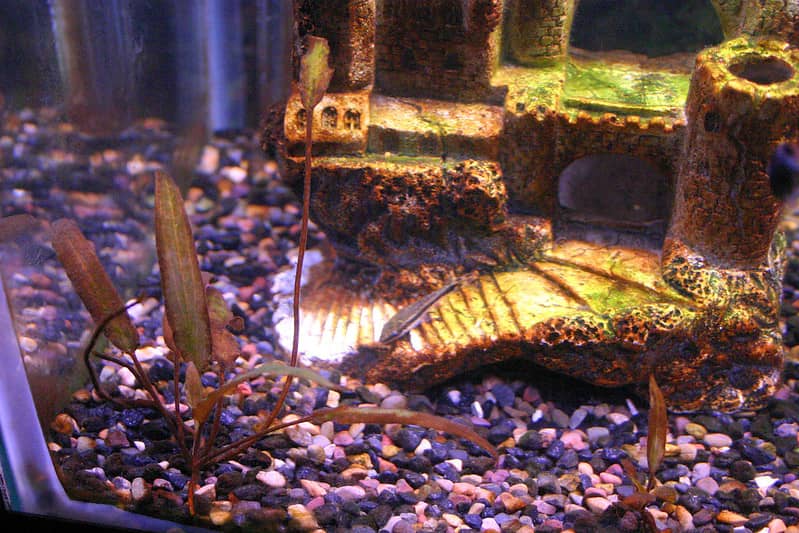Brown algae are one of the many issues everyone in the aquarium hobby could encounter. Despite being called algae, it is actually diatoms (we’ll get into this soon).
Although it is not necessarily harmful to your fish, it might be bad enough for your plants. The brown algae will cover the entire surface of the plant, making it unable to photosynthesize. As a result, your plants won’t be able to breathe, and they will eventually die.
Besides, brown algae absolutely ruin the aquarium’s aesthetic. The slimy brown layer grows on the glass, substrate, decorations, and plants. It makes the tank looks dirty and abandoned.
But no worries. Today, we will go through everything you need to know about brown algae. And most importantly, ways to remove it and prevent it from growing back quickly in your tank. Ready? Let’s dive right in!
Table of Contents
What Is Brown Algae?
The brown algae in the aquarium hobby, which we’re discussing now, is actually not algae. The actual brown algae are of class Phaeophyceae and live mostly in colder marine water throughout North America. And so, true brown algae doesn’t happen in freshwater aquariums.
Brown algae that grow inside house tanks are called diatoms, which can also be called Bacillariophyta. They are unicellular organisms that are mainly comprised of silicon nitrate and have a bony structure.

Diatoms are so small that you need to get them under a microscope to see their appearance. So, why are they visible inside the aquarium? Well, technically, diatoms are bacterial colonies. You can see them with naked eyes because they consist of billions of interlocked organisms.
Even though the “brown algae” in the tank is annoying, it plays an important role in the ecosystem. In estimation, 20% to 50% of the oxygen in the atmosphere is produced by diatoms. It makes them always present in the aquatic world.
Brown algae usually emerge in freshly established tanks that have been only going on for one to three weeks. But they will disappear on their own in a few weeks, or sometimes a couple of months.
Diatoms are not true algae, but both specimens are similar. They both consume nitrates and phosphates, and they also need light to develop. What sets them apart is that diatoms eat silica to survive, while true algae don’t.
In addition, brown algae are planktonic, and they can’t make their own movements. It all depends on the water currents they are in. That’s why they will only latch onto objects in your aquarium instead of floating and moving freely.
Identifying Brown Algae
It’s relatively easy to spot brown algae in your aquarium. You may notice a rusty brown layer covering your tank walls, substrate, plants, and other decors. The color can also be a bit like mustard or greenish-brown.
Besides just looking at it, you can feel it as well. Diatoms are slimy and feel a little gritty when you touch them. They might come off pretty easily, but you still need a sponge or scrub to clean them off.
Is It Harmful To the Aquarium Inhabitants?
Short answer, yes and no. Let’s talk about the first answer. If we’re talking about aquarium’s inhabitants, it consists of aquatic animals and plants. In this case, the brown algae can be dangerous for the plants.
The brown layer that coats the plants or corals will compete against them for nutrients. Also, it blocks out the sunlight from getting to the plants. As a result, your plants will gradually weaken and die.
On the other hand, brown algae actually bring benefits to aquatic animals. For them, diatoms are harmless. Fish has zero problems swimming around plants and decorations covered in slimy brown algae.
That’s because diatoms consume CO2 and will release oxygen. They help to increase the dissolved oxygen level in the water. Sometimes, some fish may become more active when there are brown algae. This might be an indication of low oxygen levels in the water.
What Are the Causes?
Many reasons cause the diatoms to grow in your tank. The most common one is because the aquarium is just been established recently. But there are still more other causes. Let’s check them out.
Lighting

Whether or not lighting is a major contributor to brown algae growth is still debatable. Some say that high lighting in aquariums encourages them to grow.
While some others state that it’s tanks with poor lighting that are more susceptible to brown algae. It’s because the microorganisms can thrive even in a water depth of 600 feet, which gives them little to no access to light.
Some articles may advise you to turn all the aquarium lights off for a moment. On the other hand, some others will tell you to increase the lighting intensity.
You could try both ways to find out which works best for you. Or you could also give the brown algae some time because they can vanish in a matter of days or weeks.
One thing to keep in mind is that the most important thing in brown algae reproduction is silicates. No matter how intense the lighting is, as long as there are silicates in the water, diatoms can grow and thrive in tanks.
Silicates
Silicate is the absolute favorite food of diatoms. It is composed of silicon dioxide (SiO2), which is a base component of rocks like quartz and sandstone. Again, with a sufficient amount of silicate in the water, diatoms can happily grow and live.
One way of how silicates get into the tank water is through sand, especially blasting, play, and silica-based sand. Other ways are through salt mixes (if you have a marine water tank), tap or well water, and aquarium glass.
However, sands and glass being sources of silicate are said to be a myth. The molecules in sands, substrates, and aquarium glass are strongly bonded and don’t dissolve easily in waters.
Nutrients
Just like any other living thing, brown algae need nutrition to live and grow. Other things besides silicate that are crucial for brown algae well-being are nitrates and phosphates.
First, nitrate. Nitrates can accumulate in the tank if you don’t change the water regularly. It comes from fish poop that breaks down and produces ammonia (NH3). The ammonia then becomes nitrite after being processed by beneficial bacterias in the aquarium. After that, the nitrite turns into nitrates.
Besides fish waste, nitrates can also come from tap water, decaying plants, plant fertilizers, and leftover foods.
An ideal nitrate level for all tanks is less than 20 ppm. Higher than that, it can cause stress to your fish and also encourages algae bloom.
The next one is phosphate. There’s indeed phosphate’s presence in every aquarium. That’s because the aquarium inhabitants need it. But if the levels get too high, that is an issue to be addressed.
The sources are pretty much similar to nitrates. It’s released from dead fish and plant matters, fish food, fish waste, and tap water.
High phosphate level helps feed diatoms and can also lead to algae blooms. To prevent such occurrence, you can regularly test your tap as well as the tank water.
The ideal phosphate level for your fish tank is 0.5-1 ppm. If it’s planted, the phosphate level should be 1.5-3 ppm. Remember, it’s only suitable for freshwater aquariums since it’s our focus from the beginning.
Newly Set Up Tank

A recently established tank has an unstable water parameter and different cloudiness each day. There are excessive nutrients in the water column, which is advantageous for species like brown algae. This is why diatoms tend to grow during the early cycling period.
However, beneficial bacterias are also growing during that unstable time. They are the ones who take in extra nutrients in the water, which also feed the diatoms. It takes a while for them to grow into a big colony so that they can function, maybe a couple of weeks. But once they’re established, they will outcompete the diatoms.
Ways To Getting Rid of Diatoms
Brown algae are an inevitable problem for every aquarist. Fortunately, it’s pretty easy to remove it compared to green or red algae. Although it’s not difficult to clean the diatoms, you will still need to give some effort to it.
Clean The Tank Walls
Diatoms don’t float around freely. But instead, they latch onto objects. In this case, the aquarium walls.
You can remove the diatoms that cover the walls using a scrubbing pad or a small squeegee. It’s actually pretty simple to perform the cleaning using both tools. You don’t need to use any kind of cleansers or soaps. Just the scrub is enough.

However, you will need a more steady hand if you choose the scrubby. What you need to do is wipe the walls from the bottom to the top of the waterline. Make sure that you put steady pressure on it. Then squeeze the scrub in a bucket and repeat until you finish the whole tank.
You can apply the same method when using the squeegee. It’s just you don’t need to squeeze it in a bucket.
Clean The Substrates
Cleaning the substrate might be a bit tricky. But it isn’t necessarily hard. Let’s separate the substrates into two groups: gravel and sand.
If they are the larger ones, you can take the gravel out and clean them in a separate container. But if your gravel or pebbles are small, the best way to clean them from diatoms is by using a siphon vacuum.
With the vacuum, you need to make sure that you only touch the top layer of the gravel. If you go further, the beneficial bacteria that lay underneath might get sucked up as well.
If you have a sandy substrate, you can use a fishnet and run it along the substrate. The aim is to take out the top film of the brown algae. You can repeat this step until you’ve removed as many brown algae as possible.
You can also use a vacuum. But you will need to be extra careful with it as it may take the sand in. You should pinch the vacuum and leave a small suction hole before you start the cleaning.
Clean The Decorations
As for the plants and decorations, you will definitely need to take them out. That way, you can easily scrub the brown algae off of the decors or fake plants.
All you need is a soft-bristled brush or sponge. Then, gently rub the surfaces of the fake plants or decors.
Another thing you can try is using bleach. First, you need to mix ½ cup of bleach for every gallon of water. It’s equivalent to 4 tablespoons of bleach per liter of water.
Then, soak the decors in the bleach solution for 10-20 minutes. Finally, you can rinse the clean decors with water until there’s no more bleach smell.
Introduce Some Algae Eaters

A fun way to help you get rid of the diatoms is housing some clean-up crew. The first candidate is Nerite snails. They are famous for eating leftover foods, which can help prevent brown algae from growing. They might even eat the diatoms directly!
Also, Nerite snails won’t be able to take over the tank since they need salt water to reproduce. If you house them in a freshwater tank, don’t worry about your snail multiplying themselves.
The next one is Bristlenose pleco and Otocinclus. But there’s a possibility that they won’t eat diatoms, so there’s no guarantee that they can help. Besides, you need to house them in a shoal of at least 6. They are peaceful and can be extremely shy if kept alone.
In addition to fish and snail, you can keep Amano shrimp as well. The little critter eats any algae, but they won’t help you clean the aquarium walls.
Use Chemical Additives
This is the least effective and recommended way to remove brown algae. Algicides provide almost no impact on removing the brown algae. Fun fact, diatoms can live even in places where green algae can’t, like chlorinated water.
Some products can remove phosphate and silicates from the water column. However, some plants or organisms that need those nutrients might struggle.
Therefore, we suggest doing the physical cleaning and maintain the water quality before going straight to chemical alternatives.
How To Prevent Brown Algae From Growing Back
It’s totally a relief when you’re done getting rid of the diatoms. But there’s still a chance for them to come back. To prevent it from happening, you can try implementing some of the methods below.
Perform Water Changes Regularly
Maintaining your tank water is an essential thing if you aim to keep the brown algae away. That’s because when changing the water, you also remove the nitrates and phosphates, which the diatoms need.
You can change 25% to 50% of the water every once a week. It’s recommended to change not more than 50% of the water. It will stress the fish out. By doing so, you will also get rid of all leftover foods that seem appealing to the diatoms.
Increase Water Flows
Brown algae don’t move around by themselves. Instead, they depend on water flows. Brown algae prefer still or stagnant water (with no or little flows) so that they can stick onto surfaces and grow.
If there are more currents around the tank, it will help prevent the brown algae from coming back. You can do that by adding more powerheads to make sure all water in the tank is flowing.
Don’t Overfeed
Giving too much food to your fish means some of the food will be left uneaten. The next thing that happens is that the leftover food will rot in the bottom and release a lot of nitrates and phosphates.
You certainly don’t want that since nitrates and phosphates lead to excessive diatoms and algae. If that happens, you will need to clean your tank even more frequently.
Use Reverse Osmosis (RO) Water
It’s not wrong to use tap water to fill in your tank. But tap waters might contain high levels of nitrate, phosphate, and silicate.
To avoid water impurities, you can get an RO unit, which is a sort of filter. The RO unit distills the water and usually makes the water 95% pure.
The filters push the water through fine membranes that eliminate nearly all other substances, including minerals.
All fish, however, need minerals like calcium and magnesium. You can add those minerals back in the water by providing a replenisher.
Get a UV Sterilizer
UV Sterilizer lets out a really bright UV or UVC light. The lights kill all the floating diatoms before they anchor on an object and start to grow.
Besides, the UV Sterilizer can also kill bacterias, viruses, and other types of algae. It surely won’t be a worthless investment to get one of the sterilizers.
Put More Plants
Aquatic plants are known to absorb nitrates in the water. You may already have some in your tank, but only a few plants won’t help much.
If you want to maintain good water quality, you need at least 25% of the system filled with plants.
Final Words
Even though brown algae looks ugly and not very pleasing to the eyes, it’s not harmful to the fish. On top of that, it’s relatively easy to get rid of them.
If you just set up a new tank and see a slimy brown layer coating your tank’s inside, don’t panic. It’s very normal, and you may even have to do nothing. Brown algae can leave by themselves if you give them a few weeks (or maybe months).
But if they seem to stay longer than you expected, then something is off. Luckily, there are various methods you can try to get rid of them. Also, brown algae are unlikely to be permanent.
Do you have any experience with brown algae? How did you take care of it? Let us know in the comment!






